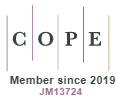SRC Model to Identify Beguiling Reviews
DOI:
https://doi.org/10.15415/jotitt.2015.31003Keywords:
Rule based classification, Matrix, Suspicious Review Classifier (SRC)Abstract
Today, e-trade sites are giving colossal number of a platform to clients in which they can express their perspectives, their suppositions and post their audits about the items on the web. Such substance helped by clients is accessible for different clients and makers as a significant wellspring of data. This data is useful in taking imperative business choices. Despite the fact that this data impact the purchasing choice of a client, however quality control on this client created information is not guaranteed, as audit area is an open stage accessible to all. anybody can compose anything on web which may incorporate surveys which are not true. as the prevalence of e-commerce destinations are hugely expanding, nature of the surveys is deteriorating step by step subsequently influencing clients’ purchasing choices. This has turned into an enormous social issue. From numerous years, email spam and web spam were the two primary highlighted social issues. at the same time these days, because of notoriety of clients’ enthusiasm toward internet shopping and their reliance on the online audits, it turned into a real focus for audit spammers to delude clients by composing sham surveys for target items. To the best of our insight, very little study is accounted for in regards to this issue reliability of online reviews. To begin with paper was distributed in 2007 by NITIN JINDAL & BING LIU in regards to review Spam detection. In the past few years, variety of techniques has been recommended by researchers to accord with this trouble. This paper intends to introduce Suspicious review Classifier model (SrC) for identifying suspicious review, review spammers and their group.
Downloads
References
[2] A. Mukherjee, B. Liu, and N. Glance, “Spotting Fake reviewer Groupshttp://dx.doi.org/10.1145/2187836.2187863
[3] A. Mukherjee, B. Liu, J. Wang, N. Glance, N. Jindal. “Detecting Group review Spam,” WWW-2011 poster paper, 2011.
[4] A. Mukherjee, V. Venkataraman, B. Liu, and N. Glance. “What yelp Fake review Filter Might Be Doing,” Proceedings of The International AAAI Conference on Weblogs and Social Media (ICWSM-2013), July 8-10, 2013, Boston, USA
[5] A. Z. Broder, “On the resemblance and containment of documents,” Proceedings of Compression and Complexity of Sequences 1997, Ieee Computer Society, 1997.
[6] Ee-peng Lim, Viet-an Nguyen, Nitin Jindal, Bing Liu and h. Lauw. “Detecting product review Spammers using rating Behaviors,” Proceedings of the 19th ACM International Conference on Information and Knowledge Management (CIkM-2010, full paper), Toronto, Canada, Oct 26 - 30, 2010.
[7] G. Fei, A. Mukherjee, B. Liu, M. Hsu, Malu Castellanos, and R. Ghosh., “Exploiting Burstiness in reviews for review Spammer Detection,” Proceedings of The International AAAI Conference on Weblogs and Social Media (ICWSM-2013), July 8-10, 2013, Boston, USA.
[8] G. Wang, S. Xie, B. Liu, Philip S. Yu. “Identify Online Store review Spammers via Social review Graph,” ACM Transactions on Intelligent Systems and Technology, accepted for publication, 2011
[9] G. Wang, S. Xie, B. Liu, Philip S.Yu. “Review Graph-based Online Store review Spammer Detection,” ICDM-2011, 2011.
[10] http://consumerist.com/2010/04/14/how-you-spot-fake-online-reviews/ last accessed on 29.05.2014 at 3:00pm.
[11] https://support.google.com/places/answer/2622994?hl=en/ last accessed on 27.08.2014 at 4:00 pm.
[12] Li, Fangtao, M. Huang, Y. Yang, and X. Zhu. “Learning to Identify review Spam,” Proceedings of the International Joint Conference on Artificial Intelligence (IJCaI-2011). 2011.
[13] N. Jindal and B. Liu, “Opinion Spam and analysis,” Proceedings of http://dx.doi.org/10.1145/1341531.1341560
[14] N. Jindal and B. Liu. “review Spam Detection” Proceedings of WWW-2007 (poster paper), May 8-12, Banff, Canada.
[15] N. Jindal, B. Liu and E. Lim. “Finding unusual review patterns usinghttp://dx.doi.org/10.1145/1871437.1871669
[16] Ott, M., Y. Choi, C. Cardie, and J.T. Hancock. “Finding deceptive opinion spam by any stretch of the imagination,” ACL, 2011.
[17] S. Dixit & A.J. Agarwal “SURVEY ON REVIEW SPAM DETECTION,” International Journal of Computer & Communication Technology ISSN (print): 0975 - 7449, Volume-4, Issue-2, 2013.
[18] S. Feng, L. Xing, A. Gogar, and Y. Choi. “Distributional Footprints of Deceptive product reviews,” proceeding of ICWSM. 2012
[19] T. Qian, B. Liu., “Identifying Multiple userids of the Same author,” Proceedings of Conference on Empirical Methods in Natural Language Processing (EMNLP-2013), October 18-21, 2013, Seattle, USA
Downloads
Published
How to Cite
Issue
Section
License
Articles in Journal on Today's Ideas - Tomorrow's Technologies (J. Today’s Ideas - Tomorrow’s Technol.) by Chitkara University Publications are Open Access articles that are published with licensed under a Creative Commons Attribution- CC-BY 4.0 International License. Based on a work at https://jotitt.chitkara.edu.in. This license permits one to use, remix, tweak and reproduction in any medium, even commercially provided one give credit for the original creation.
View Legal Code of the above mentioned license, https://creativecommons.org/licenses/by/4.0/legalcode
View Licence Deed here https://creativecommons.org/licenses/by/4.0/
 |
Journal on Today's Ideas - Tomorrow's Technologies by Chitkara University Publications is licensed under a Creative Commons Attribution 4.0 International License. Based on a work at https://jotitt.chitkara.edu.in |











